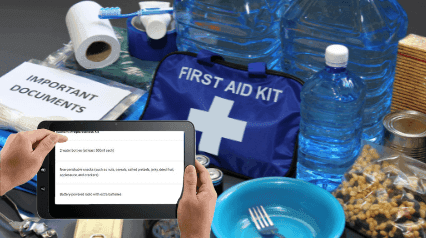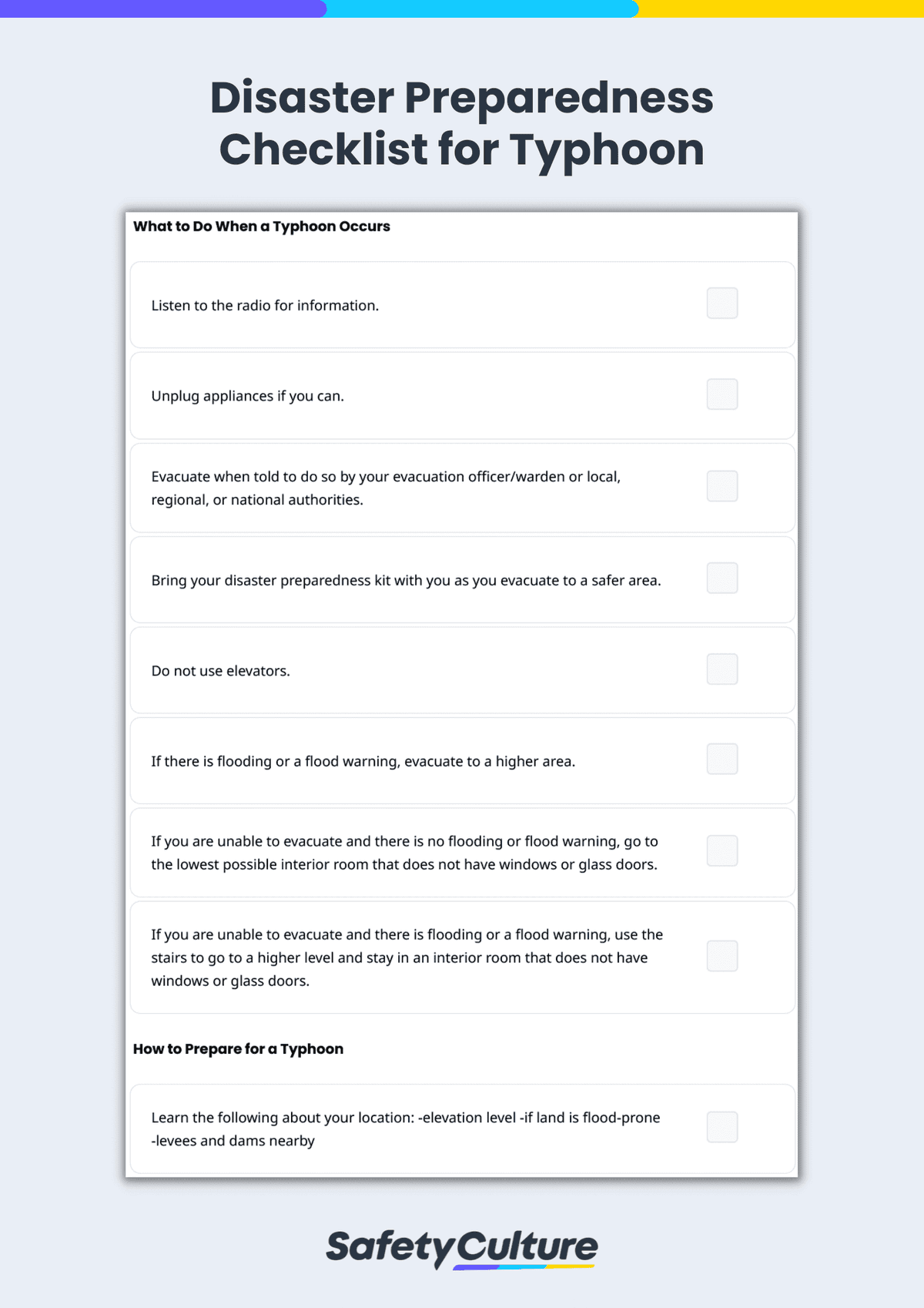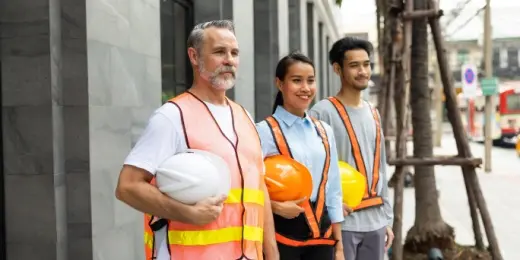What is a Disaster Preparedness Plan?
A disaster preparedness plan is an arrangement that helps organizations ensure readiness in the event of disasters such as drought, flood, tropical cyclone, wildfire, winter storm, and others. It is a guide on processes and procedures on how to evacuate, recover, and continue operations should a disaster strike. It is used to protect employees and business operations in preventing severe business damages.
Why Is It Important?
The National Centers for Environmental Information reported in 2021 that 20 weather or climate disaster events caused losses exceeding $1 billion each in the United States alone. These events resulted in fatalities of about 688 people and had significant economic effects on the impacted areas. These incidents can be prevented if organizations are prepared when disaster strikes. It is important to prepare, plan, and strategize with the help of a disaster preparedness plan. It would help organizations to:
- identify what is needed in a disaster preparedness kit;
- strategize on how to recover business activities in the quickest possible time; and
- determine individual responsibilities to evacuate or resume operations.
What are Their Features?
A disaster preparedness plan plays a vital role to ensure safety, especially in healthcare industries. Often, organizations need to create tailored processes and procedures depending on the needs of the business to address the different natures of possible crises. Here are the basic features of a disaster preparedness plan and how to develop it:

Features of a disaster preparedness plan | SafetyCulture
- Create a team – Appoint a team that will manage and communicate the disaster preparedness plan to all responsible personnel. Make sure responsibilities are clear and precise to avoid any miscommunication.
- Assess the risk – Every business has different vulnerabilities and weaknesses. Determine the possibilities of disasters that are most likely to affect the business and assess how to return to operations in the quickest time possible.
- Develop a plan – Address immediate priorities including escape routes, first aid, and disaster preparedness kits. Ensure emergency equipment such as generators and emergency lights are reliable and efficient. Focus on a recovery plan to be able to run a continuous operation even when disaster strikes.
- Provide training – Set a practice drill to execute the plan together with all employees to ensure readiness when a disaster occurs. It is recommended to set up training courses such as evacuation plan strategy to boost employee awareness and accountability.
- Understand emergency alerts – Check the possible type of disasters that may occur in the business area and understand each alert level. Identify the process of how to keep informed and updated about the disaster during and after it strikes.
- Communicate – Collaborate with other organizations to have a unified plan when a disaster occurs. Prepare contact details of government authorities for immediate reference when help is needed.
Disaster Preparedness Plan Example
It is crucial to plan and prepare for a disaster. With proper guidance, communication, and effective execution, tasks can be easily broken down to secure the safety of both the organization and its employees. For reference, here is an example of a disaster preparedness checklist that can be used for typhoons.
What to do when a typhoon occurs?
- Leave the area when told by the evacuation officer or local, regional, or national authorities.
- Bring a disaster preparedness kit as employees evacuate to a safer area.
- Do not use elevators. Use the stairs to go to a higher level and stay in an interior room that does not have windows or glass doors.
- If there is flooding or a flood warning, evacuate to a higher area.
- If employees are unable to evacuate and there is no flooding or flood warning, go to the lowest possible interior room that does not have windows or glass doors.
How to prepare for a typhoon?
- Be familiar with alert levels used in the area.
- Develop an emergency evacuation plan.
- Install a generator for power outages.
- Cover all windows with storm shutters.
- Attend training on how to turn off the electrical power in case of flooding.
Typhoon Preparedness Kit
- Water: Prepare at least 2L of water per person.
- Non-perishable food and snacks that are good for at least 3 days.
- Can opener if non-perishable food includes canned goods.
- Battery-powered radio.
- Flashlight.
- Extra batteries.
- Space blanket.
- Whistle.
- First aid kit.
- Portable tools including wrench, pliers, and screwdriver.
- Laminated and updated map of the area.
- Identification card/s that has emergency contact information
Explore our Free Disaster Preparedness Templates
See how digital checklists simplify business processes with just a tap.
View nowTips on How to Prepare Against Disaster?
Some natural disasters are unexpected and it is crucial for businesses to choose the right location to know the possibilities of disaster risks. It is important to equip the business with a good disaster preparedness plan to prevent people from panicking and potentially causing fatal accidents. Here are some actions to be carried out to prepare the business against disaster:
Readiness
- Learn about emergency warning systems and signals such as sirens and text alerts to raise environmental awareness.
- Identify local organizations that perform emergency management in the area and prepare their contact information.
- Assemble a disaster preparedness kit.
- Practice emergency evacuation plans accordingly.
- Train a group of people on first aid and emergency procedures.
- Purchase insurance to reduce the risk of disaster loss.
Evacuation plan
- Establish an emergency point person for each department.
- Communicate the needs of people with disabilities who require special attention.
- Ensure all employees know the building protocols and safety procedures.
- Analyze the floor plan and determine the best evacuation routes.
- Locate a safe place for each type of disaster and determine the Evacuation Assembly Point (EAP).
Tools
- Identify the need for other resources such as special equipment and first aid kit contents to handle critical emergencies.
- Ensure emergency equipment such as generators, fire alarms, smoke detectors, emergency lights, and other assets are in good working order.
- Maximize the use of training tools like Training.
- Use an efficient safety inspection app such as SafetyCulture (formerly iAuditor).
What is SafetyCulture?
Creating a plan to be able to respond to any disaster requires time and effort to put everything in one place. It demands a lot of paperwork and inspections to secure safety. In a traditional setting, safety officers use pen and paper during an inspection which is susceptible to damage or loss and it is a roadblock in the age of connection. This inconvenience can be avoided using SafetyCulture, an inspection app accessible through web and mobile platforms that can convert daily processes into digital workflows to unleash insight from every corner of the organization. With SafetyCulture, organizations can:
- gather and evaluate non-compliance to carry out actions immediately;
- perform inspections on a mobile device anytime and anywhere;
- capture photo evidence, annotate, and add notes in-app to further explain hazards;
- raise announcements in-app to any member of the organization; and
- generate and share reports anytime, anywhere with a few simple taps.





